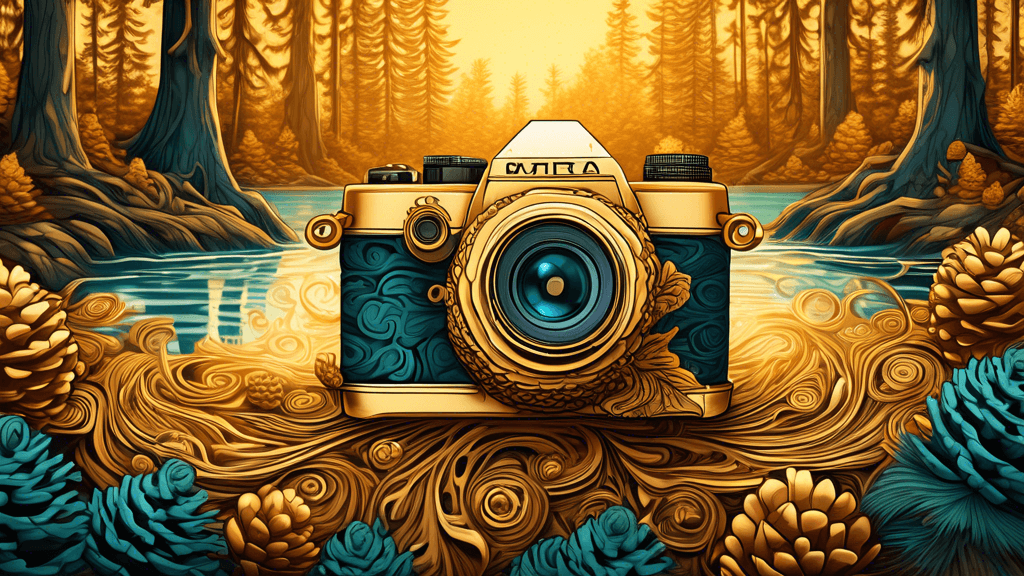
Capturing Nature's Beat: Exploring Patterns in Nature Photography
Share
Understanding the Allure of Nature Photography
Nature photography isn’t just a way to capture landscapes; it’s a method to document the incredible patterns and rhythms that exist in the natural world. Whether it's the intricate network of branches in an ancient tree, the delicate symmetry of a butterfly's wings, or the spiraling growth of a seashell, nature is replete with designs that are as beautiful as they are complex.
Why Focus on Patterns in Nature?
Patterns in nature serve as one of the most intriguing subjects for photographers because they offer a glimpse into the intricate order of the natural world. Occasionally subtle and frequently stunning, these patterns provide insight into the universal rules that govern environmental evolution. But why do these patterns evoke such a strong response from both photographers and their audience?
- Universal Appeal: Natural patterns are appealing because they resonate with the inherent sense of order and balance that humans instinctively seek.
- Aesthetic Value: The recurring designs and symmetries found in nature are inherently pleasing to the eye, making them popular subjects in art and photography.
- Symbolic Significance: Often, the patterns found in nature are loaded with symbolism. For example, the spiral can represent growth and evolution, while a perfectly symmetrical flower might symbolize harmony and beauty.
Techniques for Capturing Patterns
Successful pattern photography hinges on the ability to not only recognize patterns but to effectively capture them in a way that highlights their natural beauty. Here are several techniques that can help:
- Mind the Composition: When working with complex patterns, composition is key. A well-composed photograph will guide the viewer's eye and emphasize the inherent beauty of the pattern.
- Play with Light: Lighting can dramatically enhance or obscure the patterns you’re trying to capture. Early morning or late afternoon light, known as the golden hours, is often ideal for photography because it casts long, soft shadows that can define textures and details.
- Use of Macro Lenses: Macro lenses are particularly suitable for capturing patterns at a close range, ideal for subjects like insect wings, leaves, or smaller creatures.
Examples of Patterns in Nature for Photography
Exploring patterns in nature photography isn’t limited to a specific subject. The natural world provides a ceaseless supply of inspiration. Consider these examples:
- Fern Fronds: The spiral of a fern frond as it unfurls is a classic example of natural patterning.
- Water Ripples: The repetitive yet unpredictable pattern of ripples on water can create mesmerizing images, especially with reflected light.
- Sand Dunes: The windswept patterns on sand dunes offer a study in texture and line, influenced by the wind’s direction and force.(rendered)p>
Perspectives from Experts
Notable nature photographers often discuss the near-spiritue quality of capturing nature’s designs. Ansel Adams, renowned photographer and environmentalist, once said, “Patterns of textures and proportions, their visual influence honest and direct, offer profound joy in the observation and photographing of their forms” (Ansel Adams). His reflections emphasize the deep, intrinsic connection that patterns in nature forge between the photographer and the subject.
Conservation Through the Camera Lens
Beyond their aesthetic appeal, capturing nature’s patterns plays a critical role in conservation efforts. Photographs that show the breathtaking complexity and beauty of nature can help stir public support for environmental protection. The documentation of nature’s designs not only celebrates its beauty but also highlights the urgent need to protect it.
Every photograph of a natural pattern is a call to preserve that wonder. By understanding and appreciating the sophistication and fragility of these patterns, photographers and observers can become more motivated to engage in and advocate for conservation efforts.
Conclusion
Photography, especially when focused on the natural world’s patterns, does more than just document reality—it highlights the astonishing intricacy of the environment. The act of capturing these patterns fostypes awareness and a greater appreciation of our surroundings, bridging the gap between art and environmental stewardship.
If you are drawn to the rhythms of the natural world, consider how your photography can not only capture these patterns but also inspire change. Every image you take has the power to affect perceptions, evoke emotions, and initiate actions aimed at preserving the delicate balance of our environment. So, why not start your journey of capturing nature’s beat today?





